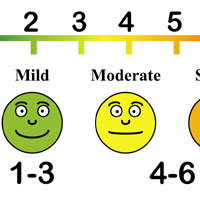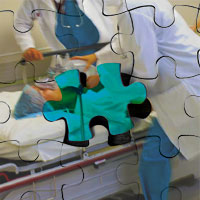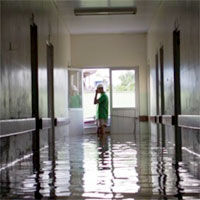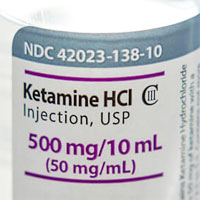Tag: sedation

Comparison of Self-Reported and Behavioral Pain Assessment Tools in Critically Ill Patients
Self-reported and behavioral pain assessment scales are often used interchangeably in critically ill patients due to fluctuations in mental status. The correlation between scales is not well elucidated. The purpose of this... read more

Pressure Injuries and Sedation: Are they related?
Critically ill patients inherently have most of the risk factors for the development of pressure injuries. One of the key factors is immobility, which is very frequent in ICUs. This lack of mobility is enhanced by the administration... read more

Persistence of Delirium after Cessation of Sedatives and Analgesics and Impact on Clinical Outcomes in Critically Ill Patients
As delirium is a common manifestation in critically ill patients and is associated with worse clinical outcomes, we sought to characterize the reversibility of delirium after discontinuation of sedation and to determine whether... read more

Music as Therapy in the ICU
Music has been shown to reduce respiratory, cardiac and blood pressure frequencies in response to the reduction of stress hormones. In a randomized clinical trial, it was shown to reduce anxiety and sedation doses/intervals... read more
Early Mobility in Critically Ill Patients
Kyle Enfield, MD, speaks with Wes Ely, MD, MPH, about his talk presented at the Multiprofessional Critical Care Review: Adult course in Rosemont, Illinois entitled, "Early Mobility in Critically Ill Patients: More to Come."... read more

Recovery After Critical Illness: Putting the Puzzle Together
In this review, we seek to highlight how critical illness and critical care affect longer-term outcomes, to underline the contribution of ICU delirium to cognitive dysfunction several months after ICU discharge, to give new... read more

General Anesthesia a Viable Sedation Strategy for Thrombectomy in Stroke
An analysis of a New York registry with 1174 patients who underwent thrombectomy showed a correlation between general anesthesia and death. Several other studies that only compared embolectomies done with and without general... read more

The Overlooked Danger of Delirium in Hospitals
The condition, once known as "ICU psychosis," disproportionately affects seniors and those who have been heavily sedated—and the delusions can last long after they're discharged. Patients treated in intensive-care units... read more

Considerations for Physicians Using Ketamine for Sedation of Children in EDs
Ketamine use in emergency departments (EDs) for procedural sedation and analgesia is becoming increasingly common. However, few studies have examined patient factors related to adverse events associated with ketamine. This... read more

Optimizing Quality and Efficiency of Critical Care Delivery
Providing "health" care is expensive, and providing "sick" care is even more expensive. Here we will outline a newly packaged, high-yield opportunity for your institution regarding optimization of your critical care service... read more

The Hidden Faces of Sepsis, What Do They Tell Us?
Based on the patients' perspective Nutma sheds light on the hidden faces of sepsis, calling for more expertise on sepsis sequelae. She also offers recommendations to improve recovery and outcome. Sepsis really caught me by... read more

Eye Protection in Anaesthesia and Intensive Care
New guidelines on prevention of eye injuries during anaesthesia and intensive care have been developed by the French Society for Anaesthesia and Intensive Care Medicine (SFAR), together with the French Ophthalmology Society... read more

Factors Associated With Pediatric Ventilator-Associated Conditions in Six U.S. Hospitals
A newly proposed surveillance definition for ventilator-associated conditions among neonatal and pediatric patients has been associated with increased morbidity and mortality among ventilated patients in cardiac ICU, neonatal... read more

Multicenter Assessment of Sedation and Delirium Practices in the ICU in Poland
A majority of Polish ICUs do not adhere to international guidelines regarding sedation and delirium practices. There continues to be inadequate use of sedation and delirium monitoring tools. High usage of benzodiazepines... read more








